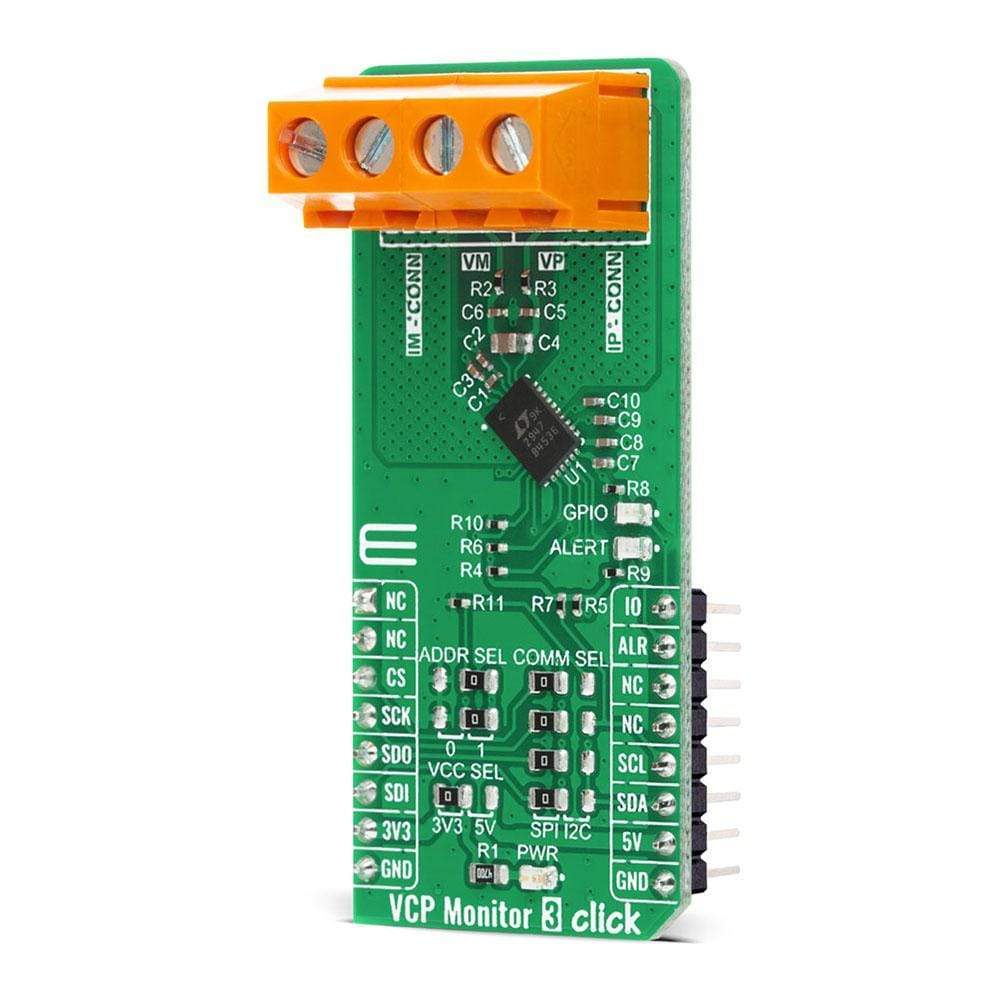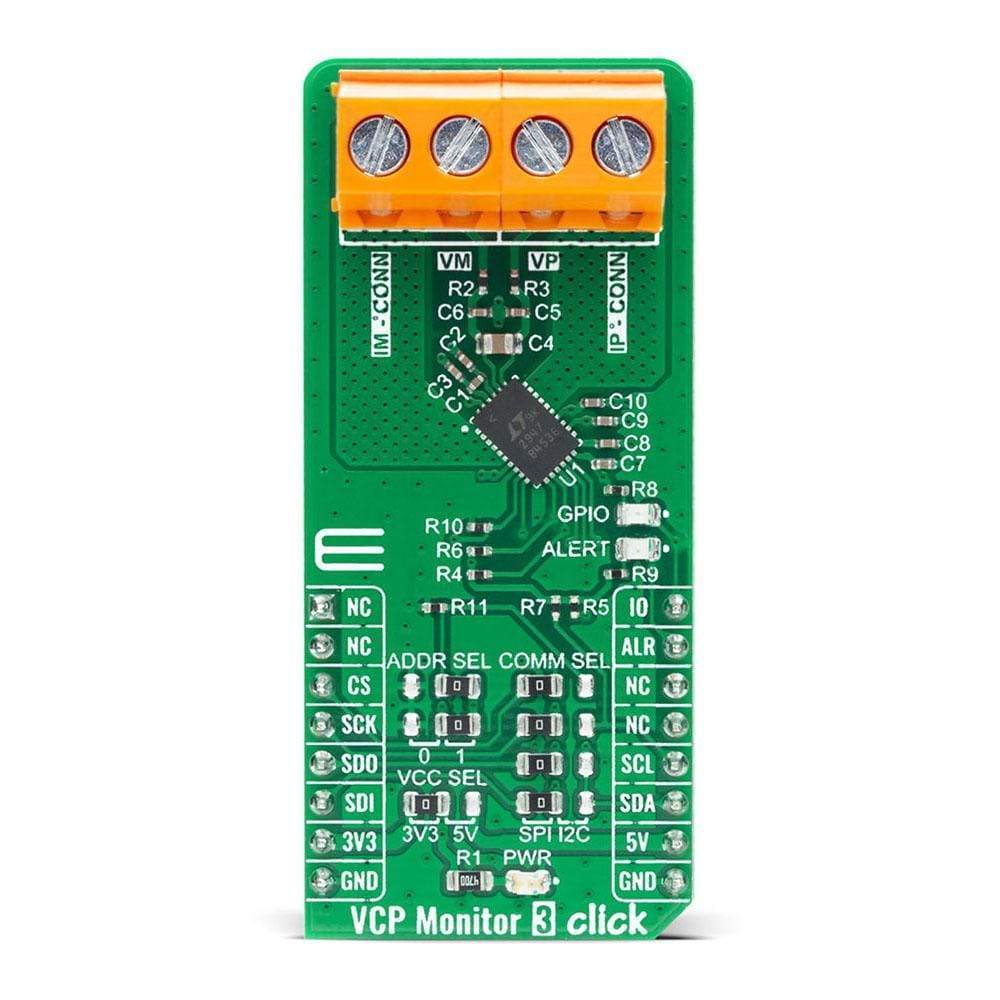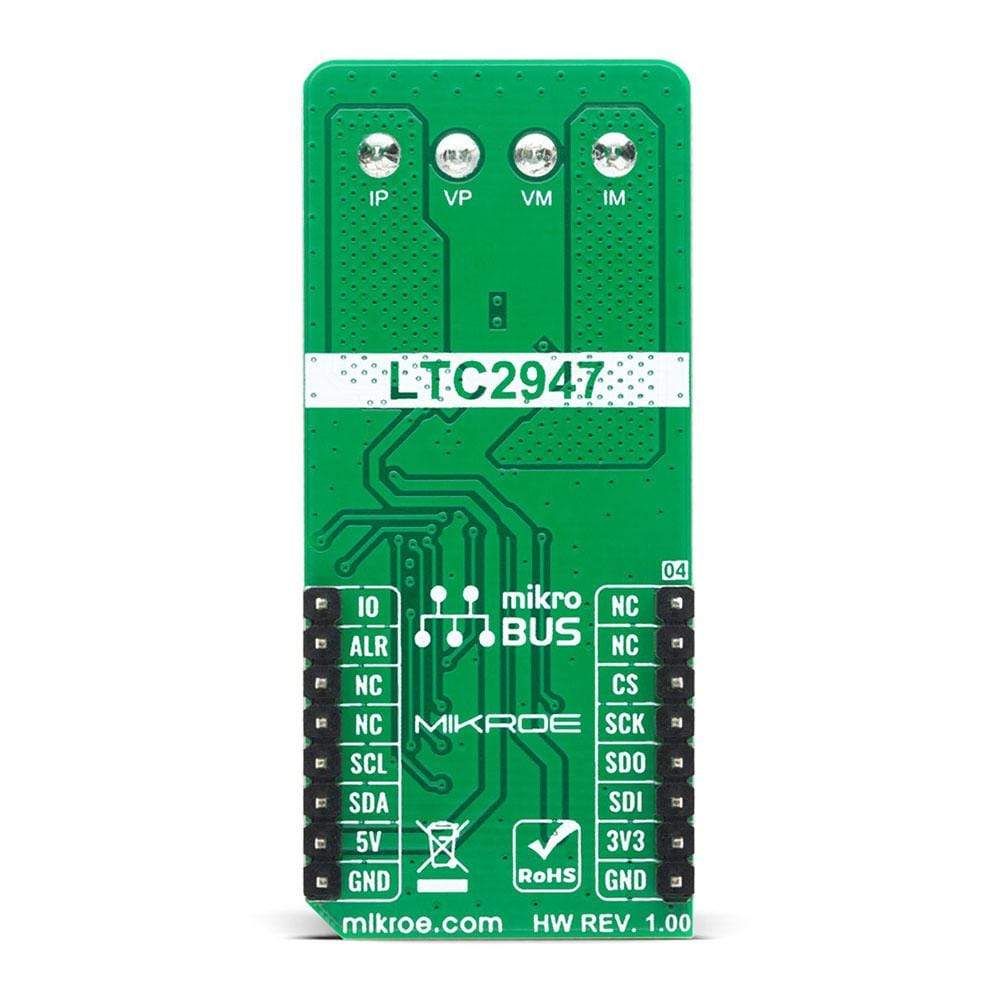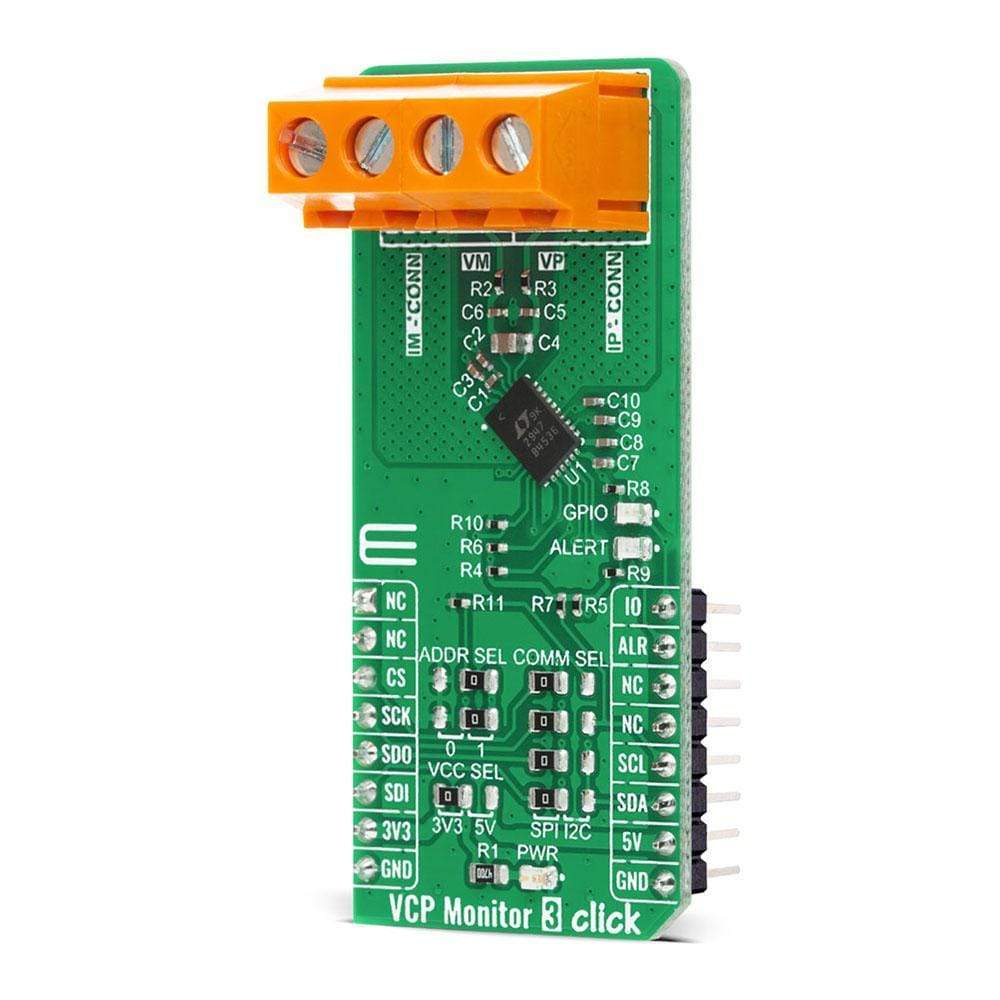
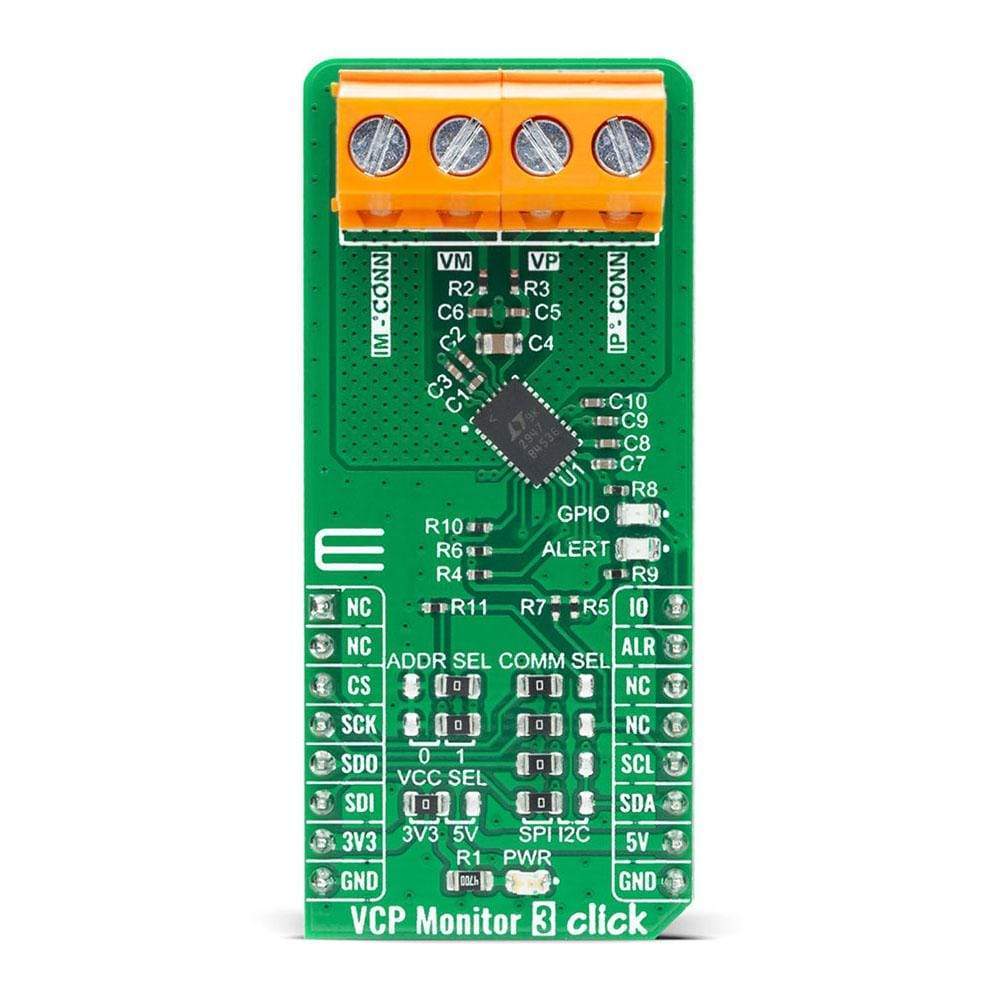
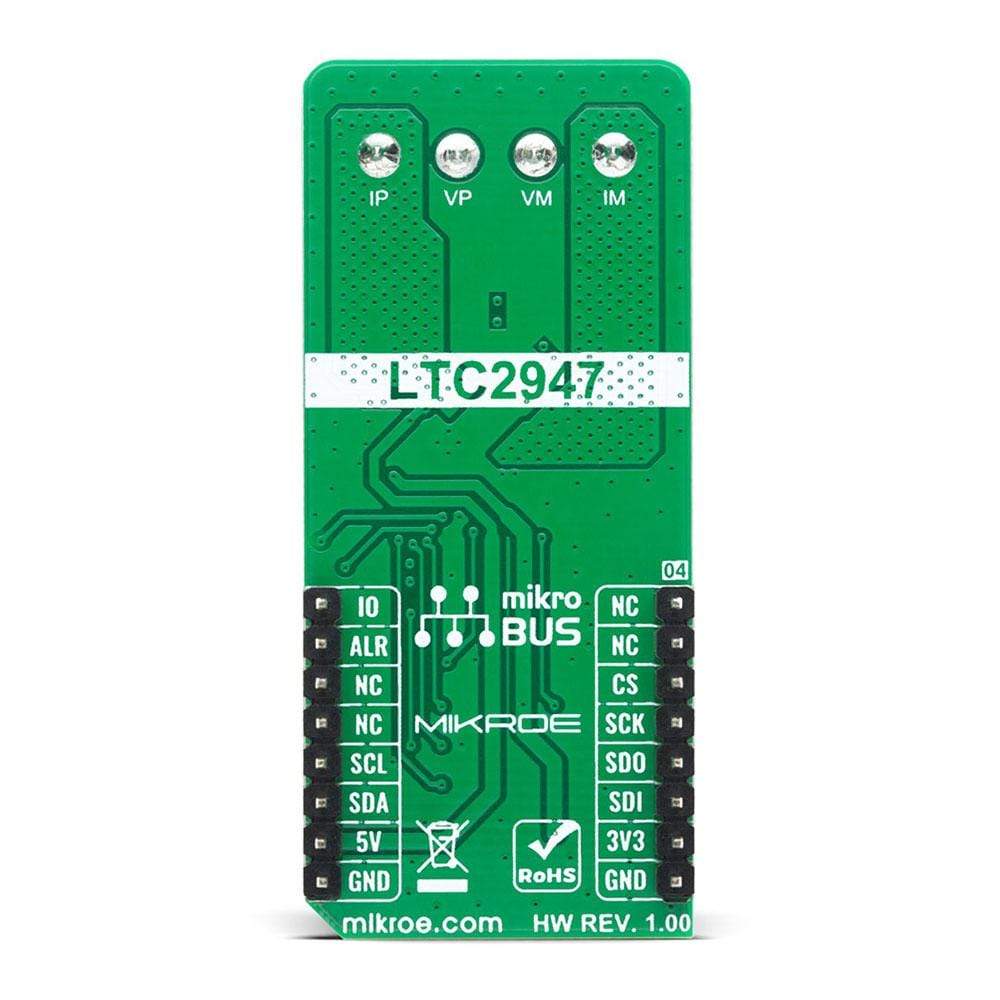
Overview
The VCP Monitor 3 Click Board™ is a high precision Voltage, Current and Power measurement Click Board™ with an input capable of taking up to 15V. It features the LTC2947, from Analog Devices, a high precision power and energy monitor with an internal sense resistor supporting up to ±30A. Three internal no latency delta-sigma ADCs ensure accurate measurement of voltage and current, with up to 0.5% voltage and 1% current accuracy while high-bandwidth analogue multiplication provides precise power measurement in a wide range of applications. An internal 300μΩ, temperature-compensated sense resistor minimizes efficiency loss while enabling high accuracy current measurement over the full temperature range. All measured values are stored in internal registers accessible via the selectable I2C or SPI interface. All these features make VCP Monitor 3 Click ideal for use in applications such as industrial measurements, electric vehicles, photovoltaic systems, telecom infrastructure, servers, and more.
The VCP Monitor 3 Click is supported by a mikroSDK compliant library, which includes functions that simplify software development. This Click Board™ comes as a fully tested product, ready to be used on a system equipped with the mikroBUS™ socket.
Downloads
Das VCP Monitor 3 Click Board™ ist ein hochpräzises Click Board™ zur Spannungs-, Strom- und Leistungsmessung mit einem Eingang, der bis zu 15 V aufnehmen kann. Es verfügt über den LTC2947 von Analog Devices, einen hochpräzisen Leistungs- und Energiemonitor mit einem internen Messwiderstand, der bis zu ±30 A unterstützt. Drei interne Delta-Sigma-ADCs ohne Latenz gewährleisten eine genaue Messung von Spannung und Strom mit einer Spannungsgenauigkeit von bis zu 0,5 % und einer Stromgenauigkeit von 1 %, während die analoge Multiplikation mit hoher Bandbreite eine präzise Leistungsmessung in einer Vielzahl von Anwendungen ermöglicht. Ein interner temperaturkompensierter Messwiderstand von 300 μΩ minimiert den Effizienzverlust und ermöglicht gleichzeitig eine hochpräzise Strommessung über den gesamten Temperaturbereich. Alle Messwerte werden in internen Registern gespeichert, auf die über die wählbare I2C- oder SPI-Schnittstelle zugegriffen werden kann. All diese Funktionen machen VCP Monitor 3 Click ideal für den Einsatz in Anwendungen wie Industriemessungen, Elektrofahrzeugen, Photovoltaiksystemen, Telekommunikationsinfrastruktur, Servern und mehr.
Der VCP Monitor 3 Click wird von einer mikroSDK-kompatiblen Bibliothek unterstützt, die Funktionen enthält, die die Softwareentwicklung vereinfachen. Dieses Click Board™ wird als vollständig getestetes Produkt geliefert und ist bereit für den Einsatz auf einem System, das mit der mikroBUS™-Buchse ausgestattet ist.
| General Information | |
|---|---|
Part Number (SKU) |
MIKROE-4222
|
Manufacturer |
|
| Physical and Mechanical | |
Weight |
0.025 kg
|
| Other | |
Country of Origin |
|
HS Code Customs Tariff code
|
|
EAN |
8606027380198
|
Warranty |
|
Frequently Asked Questions
Have a Question?
Be the first to ask a question about this.

